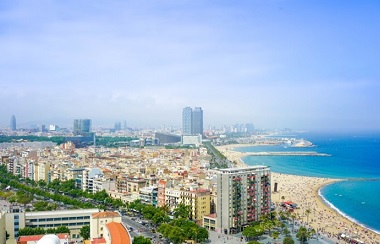INTERNATIONAL REPORT—Broadly speaking, the success of a destination is judged by the number of visitors it welcomes in each time frame. In the wake of the COVID-19 pandemic, destinations are, in general, more determined than ever to attract large numbers of tourists, which is why our Most Visited Destinations report focuses on the year’s most-visited destinations.
However, more is not always better, and it is important to remember the issues of overtourism many destinations were facing before the global health crisis emerged. In fact, as more and more global regions approach full travel recovery, the topic of overtourism once again occupies a high position on the travel industry agenda. That’s why in this article we discuss what destinations can do to better manage overtourism.
Overtourism—a Hard Concept to Define
As a concept, overtourism is relative and highly subjective, with one destination’s understanding of the term potentially differing significantly from another’s. Even within a single destination, what one party considers too many tourists, another may see as the ideal number, or even not enough.
Destinations that attract a high number of tourists tend to develop in such a way that visitors are better catered for. For example, popular city destinations usually have a large offer of chain hotels and restaurants as well as souvenir shops. According to residents and organizations concerned with preserving heritage, these businesses may damage the city’s identity and contribute to overcrowding in central areas. Despite this, they generally become an important economic contributor—to such an extent that when tourists are not visiting, the city suffers financially.
The Evolving Responsibilities & Requirements of the Modern DMO
It is the responsibility of the modern destination marketing organization (DMO) to consider the needs of all stakeholders and balance economic imperatives with social and environmental concerns. The question is how—because, clearly, a DMO does not have the authority to decide which businesses are licensed to operate at its destination; nor can it control who lets their flat out to tourists via Airbnb, driving up rent in the area.
Nevertheless, DMOs do have the power to influence the governmental departments responsible for managing such matters.
 The key here is data. For instance, where tourist arrival figures support the complaints of residents and heritage organizations regarding overcrowding in a certain area, DMOs can present this information to the relevant authority, which may then impose limits on applications for new tourist-focused businesses and/or holiday rentals in the area.
The key here is data. For instance, where tourist arrival figures support the complaints of residents and heritage organizations regarding overcrowding in a certain area, DMOs can present this information to the relevant authority, which may then impose limits on applications for new tourist-focused businesses and/or holiday rentals in the area.
There are also issues that a DMO can influence more directly. Residents of many European destinations complain that their city is overrun with groups of drunk and noisy tourists, often celebrating stag or hen parties. This is a common problem in Amsterdam, for example. In such cases, data on traveler profiles can be used to identify these visitors, who typically travel in large groups and spend short periods at the destination. Where this type of tourist comprises a large proportion of a destination’s audience, the DMO can focus its marketing efforts on promoting other aspects of the destination that attract a different kind of tourist—ideally one with higher purchasing power who is more likely to partake in cultural activities.
Similarly, where the data reveals that specific parts of a destination are suffering from overcrowding through mass tourism, the DMO can concentrate its efforts on publicizing less-visited areas and attractions to distribute tourists’ social, environmental and economic impact more evenly.
However, overtourism relates not only to the profile of tourists and the locations they frequent but also to the time of year they tend to visit. Indeed, unchecked seasonality can cause social and environmental issues due to overcrowding in peak seasons, while in low seasons, it can leave a destination sorely lacking in tourism revenue. Therefore, where arrivals data shows significant spikes at certain periods and considerable drop-offs at others, the DMO should shift its focus to promoting a steadier flow of visitors throughout the year. In the case of a traditional beach destination like Málaga, Spain, for instance, this may mean drawing attention to a less weather-dependent aspect of its offering, such as nearby heritage sites, museums, nature trails or national parks.
Implementing the Right Strategy to Combat Overtourism
The village of Siurana in Catalunya provides a good example of how destinations can manage the impact of tourism. The historic community, which is home to beautiful nature sites and some of the world’s most challenging climbs, has recently refused to be included in the list of most beautiful villages and towns in Spain, adopting a sustainable, quality-over-quantity approach to tourism as it lacks the capacity and infrastructure to support large numbers of visitors. Tourism-focused businesses, such as the local bar, hotel, and campsite, agreed with this response.
Siurana shows how DMOs, village or town planners and local businesses can work together to agree on the best approach for their destination. While this example concerns a small village, the same methodology should be applied on a larger scale to manage overtourism in cities.
However, ForwardKeys understands that finding creative solutions to overtourism is easier said than done, which is why data is so important to the modern DMO. Rather than simply responding to developments and hoping that response proves successful, DMOs need to monitor the situation continually to ensure their implemented policies are making the desired impact—and react accordingly if not.
Travel intelligence based on reliable data is fundamental to this approach. Request a demo or download the full report here and discover which other travel trends shaped 2022.






